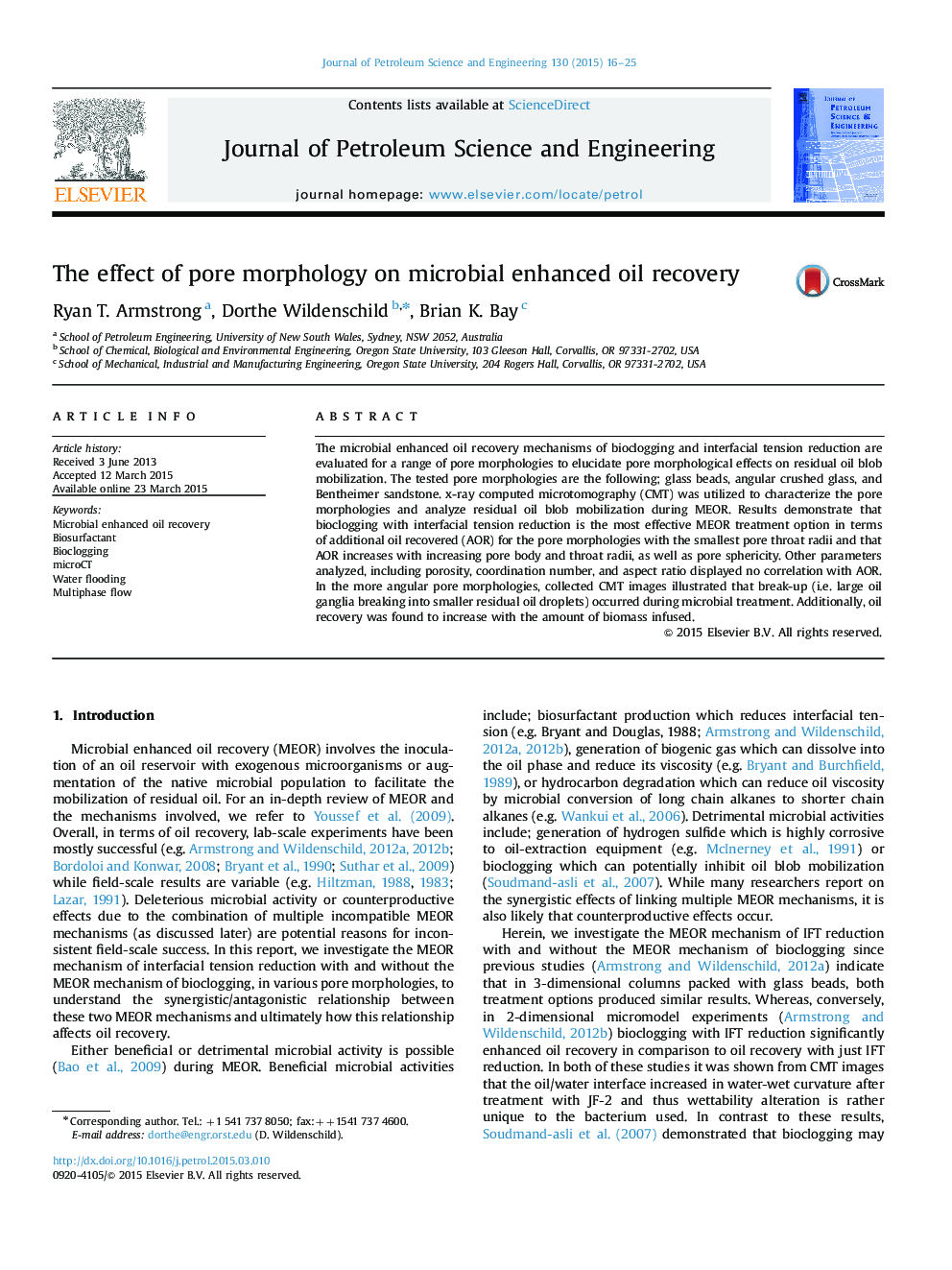| Article ID | Journal | Published Year | Pages | File Type |
|---|---|---|---|---|
| 1754977 | Journal of Petroleum Science and Engineering | 2015 | 10 Pages |
•MEOR mechanisms of biosurfactant production and bioclogging are investigated.•Oil recovery increased with sphericity, pore radii, and throat radii.•No correlation between AOR and porosity, aspect ratio, and coordination number.•Oil blob distributions before and after MEOR were similar.•Sor and AOR results were dependent on the largest residual oil blob.
The microbial enhanced oil recovery mechanisms of bioclogging and interfacial tension reduction are evaluated for a range of pore morphologies to elucidate pore morphological effects on residual oil blob mobilization. The tested pore morphologies are the following; glass beads, angular crushed glass, and Bentheimer sandstone. x-ray computed microtomography (CMT) was utilized to characterize the pore morphologies and analyze residual oil blob mobilization during MEOR. Results demonstrate that bioclogging with interfacial tension reduction is the most effective MEOR treatment option in terms of additional oil recovered (AOR) for the pore morphologies with the smallest pore throat radii and that AOR increases with increasing pore body and throat radii, as well as pore sphericity. Other parameters analyzed, including porosity, coordination number, and aspect ratio displayed no correlation with AOR. In the more angular pore morphologies, collected CMT images illustrated that break-up (i.e. large oil ganglia breaking into smaller residual oil droplets) occurred during microbial treatment. Additionally, oil recovery was found to increase with the amount of biomass infused.
